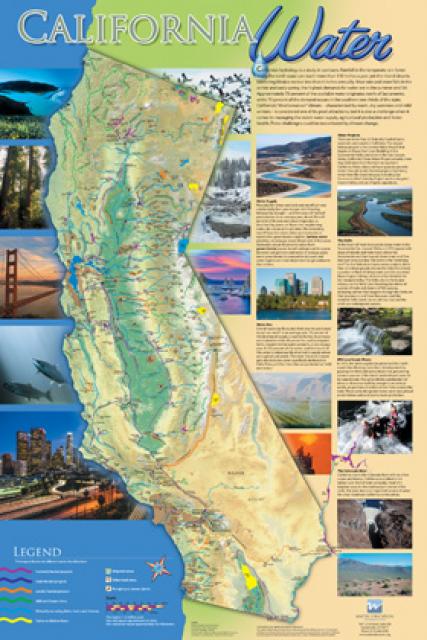Despite Risk of Unprecedented Shortage on the Colorado River, Reclamation Commissioner Sees Room for Optimism
WESTERN WATER NOTEBOOK: Commissioner Brenda Burman, in address at Foundation’s Water Summit, also highlights Shasta Dam plan
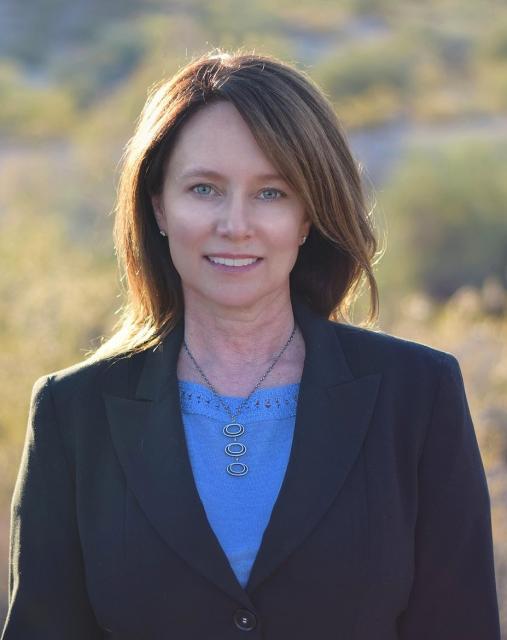 The Colorado River Basin is more
than likely headed to unprecedented shortage in 2020 that could
force supply cuts to some states, but work is “furiously”
underway to reduce the risk and avert a crisis, Bureau of
Reclamation Commissioner Brenda Burman told an audience of
California water industry people.
The Colorado River Basin is more
than likely headed to unprecedented shortage in 2020 that could
force supply cuts to some states, but work is “furiously”
underway to reduce the risk and avert a crisis, Bureau of
Reclamation Commissioner Brenda Burman told an audience of
California water industry people.
During a keynote address at the Water Education Foundation’s Sept. 20 Water Summit in Sacramento, Burman said there is opportunity for Colorado River Basin states to control their destiny, but acknowledged that in water, there are no guarantees that agreement can be reached.
“While you can’t control weather, you can’t control climate in many ways, what we do know is that we can look at the risk ahead and we can find ways to address that risk,” she said.
In a talk that touched on Reclamation’s work across the West, Burman also said California needs more water storage to take advantage of exceptional runoff years and pointed to the Bureau’s proposal to raise Shasta Dam as one solution.
The first woman commissioner in Reclamation’s 116-year history, Burman, 51, lauded the “great tradition” of cooperative efforts by stakeholders to maintain the Colorado River’s viability even as people have begun to contemplate the potential impacts of a coming crisis.
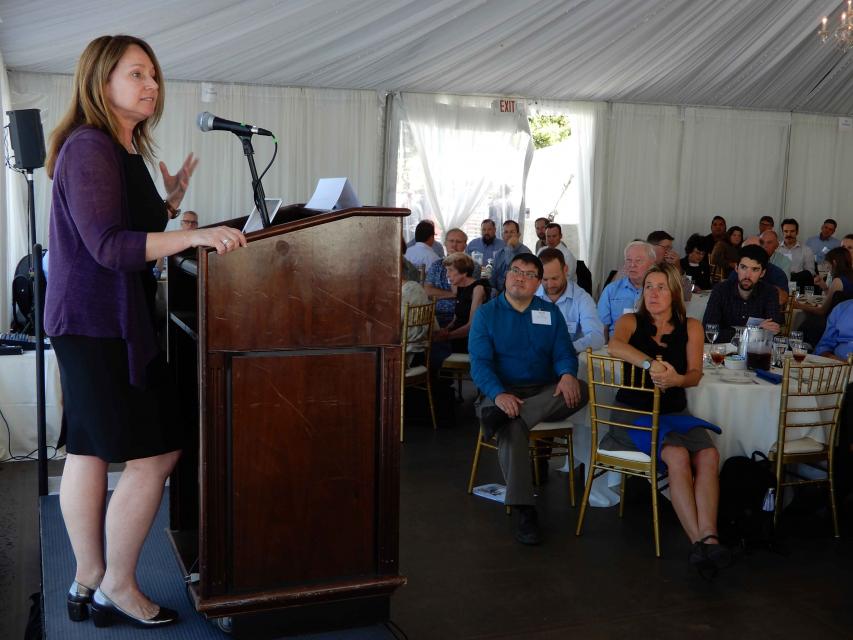 “Everybody has come together, and we
are working furiously about how do we address that risk, how do
we buy it down, how do we control our own destiny,” she said. “We
are very close and very hopeful of coming to terms this year with
a deal on the Colorado River … where everybody is taking a little
bit of a hit, finding more flexibility, but knowing that the
future may hold more difficult problems.”
“Everybody has come together, and we
are working furiously about how do we address that risk, how do
we buy it down, how do we control our own destiny,” she said. “We
are very close and very hopeful of coming to terms this year with
a deal on the Colorado River … where everybody is taking a little
bit of a hit, finding more flexibility, but knowing that the
future may hold more difficult problems.”
Should dry conditions continue this winter, Reclamation projects a 57 percent chance of a shortage declaration in 2020, which would be the first time that has ever occurred. Under the first tier of a shortage declaration on Lake Mead, Colorado River water deliveries, primarily to Arizona, would be cut. The seven Colorado River Basin states — California, Nevada, Arizona, Colorado, New Mexico, Utah and Wyoming — have responded with pending drought contingency plans that are centered on the idea that all water users, not just those with junior water rights, have a stake in keeping the system whole.
“When you look at the risk that’s being faced on the Colorado River, I commend the senior water users who have stepped up,” Burman said. “Senior users on the Colorado River system have very much stepped up and said, ‘We recognize this risk and we are willing to come to the table to figure this out.’”
“The reason that we have continued to be successful on the river is because you step back, you use that leadership and trust you have built with your own constituents and with each other, and you find the way to bring home a deal that works for everybody and is durable.”
~Brenda Burman, Bureau of Reclamation Commissioner
She noted the fragility that often exists with complicated water sharing agreements.
“I talk about this like it is an inevitability, and like all water negotiations, it’s not,” she said. “It could fall apart at any moment.”
Earlier this year, Burman used the power of her bully pulpit to urge water users in the Basin “to put real — and effective” drought contingency plans in place before the end of this year. It is incumbent upon all the entities that rely on the river system to pursue negotiated agreements rather than a path of conflict and litigation, she told the Sacramento audience.
“In many ways it’s so much easier to go home, if you are representing a constituent, and talk about the conflict, be righteous, feel wronged and talk about how you are going to fight for absolutely every last drop of your water,” she said. “But the reason that we have continued to be successful on the river is because you step back, you use that leadership and trust you have built with your own constituents and with each other, and you find the way to bring home a deal that works for everybody and is durable.”
Burman has a wealth of knowledge and experience in water gleaned from stops at key positions in Washington and the West throughout her 25-year career.
Her appointment last year was lauded by water policy experts, including former Reclamation Commissioner Bob Johnson, who said Burman “will provide the leadership needed to help address the complex water management issues of the 21st century.”
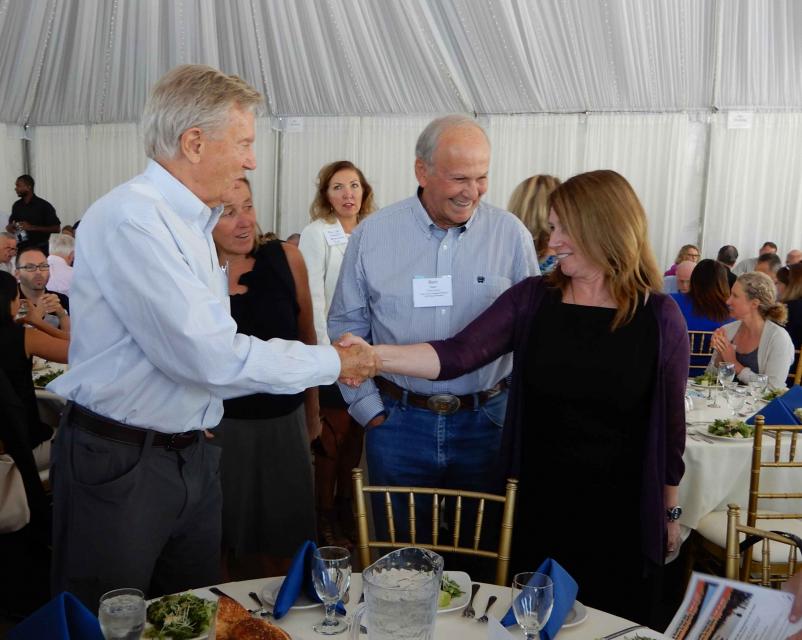 The overseer of the Central Valley
Project (CVP) and the vast apparatus of the Colorado River
Storage Project, Reclamation employs about 5,000 people in
maintaining 475 dams and 337 reservoirs across 17 Western and
Great Plains states.
The overseer of the Central Valley
Project (CVP) and the vast apparatus of the Colorado River
Storage Project, Reclamation employs about 5,000 people in
maintaining 475 dams and 337 reservoirs across 17 Western and
Great Plains states.
Burman assumed her duties amid a whirlwind of water policy activity in California as a new federal administration began to establish its priorities for managing the CVP. The emphasis of that task, which includes the proposed raising of Shasta Dam, was crystallized in August when Interior Secretary Ryan Zinke called for a plan to maximize water supply deliveries from the CVP to farmers in the San Joaquin Valley. Asked about the plan at the Water Summit, Burman said work on it is still underway.
Burman lamented the inability of the current water storage system in California to take advantage of the runoff that comes during exceptionally wet years, such as 2017.
“There is a huge reliability problem on this system,” she said. “There is not enough infrastructure and we don’t have enough places to put water, whether it’s above ground or underground. It is time for us to take a look at what is available and what is affordable for increasing the capacity of this system so that the water supply is more reliable in dry years.”
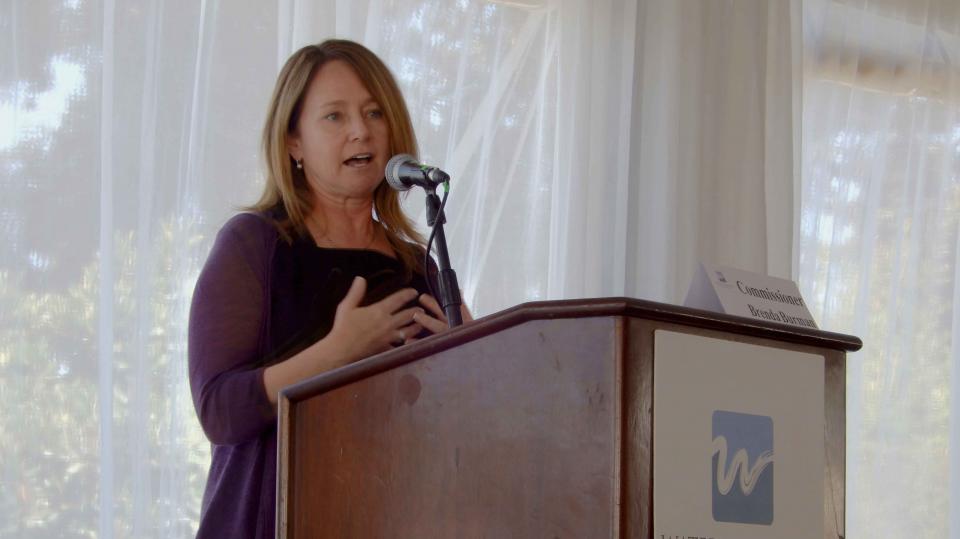 She called the proposed raising of
Shasta Dam, which has been discussed for more than 20 years and
is controversial in some corners, “by far the most cost-effective
project” for creating a water supply.
She called the proposed raising of
Shasta Dam, which has been discussed for more than 20 years and
is controversial in some corners, “by far the most cost-effective
project” for creating a water supply.
“If you raise the dam by 18 feet … you can actually have an incredible effect,” she said. “You can produce over 600,000 acre-feet of new capacity and new space in that system. If we had filled that up in 2017, that would have helped so much this year. It would have helped with meeting our responsibilities to fish and meeting the responsibilities to our contractors.”
CVP contractors south of the Delta support the idea of raising the dam because the extra storage could help with their supply during tight times and provide the necessary water for embattled salmon populations.
Some environmental and fishery organizations and the nearby Winnemem Wintu Tribe oppose raising the dam.
In a March 2018 letter to some congressional leaders, Natural Resources Agency Secretary John Laird wrote that a dam raise “would violate California law due to the adverse impacts that project may have on the McCloud River and its fishery.”
“While you can’t control weather, you can’t control climate in many ways, what we do know is that we can look at the risk ahead and we can find ways to address that risk.”
~Brenda Burman, Bureau of Reclamation Commissioner
In addition to her time as a deputy commissioner with Reclamation and a deputy assistant secretary at Interior, Burman’s 25-year career has been spent with the Salt River Project in Arizona, Metropolitan Water District of Southern California, The Nature Conservancy and the office of Arizona Senator Jon Kyl.
A graduate of the University of Arizona College of Law, Burman was a judicial clerk for the Wyoming Supreme Court and Coconino County Superior Court in Arizona.
She began her career as a park ranger at Grand Canyon National Park. In her testimony last year to the Senate Committee on Energy and Natural Resources, she talked about the lessons learned from that experience.
“In the canyon, we counted on scarce springs in the backcountry for our water supply, and on the rim we counted on a rickety old pipeline that often broke to bring water from Roaring Springs up to the rim and the tourist area,” she said. “It was a learning experience that taught me the value of water and the hard work it often takes to get it.”
Read more about some of the people and issues featured at our Sept. 20 Water Summit, as highlighted earlier this year in Western Water.
California water/Delta
- When Water Worries Often Pit Farms vs. Fish, a Sacramento Valley Farm Is Trying To Address The Needs Of Both (Aug. 24)
- Researchers Aim to Give Homeless a Voice in Southern California Watershed (March 9)
- It’s Not Just Nutria — Sacramento-San Joaquin Delta has 185 Invasive Species, But Tracking Them is Uneven (June 1)
- Does California’s Environment Deserve its Own Water Right? (Feb. 23)
Colorado River
- As Colorado River Levels Drop, Pressure Grows On Arizona To Complete A Plan For Water Shortages (June 15)
- Can Steadier Releases from Glen Canyon Dam Make Colorado River ‘Buggy’ Enough for Fish and Wildlife? (Sept. 7)
- New Leader Takes Over as the Upper Colorado River Commission Grapples With Less Water and a Drier Climate (Aug. 10)
People
- Panelist Joaquin Esquivel: One Year In, A New State Policymaker Assesses the Salton Sea, Federal Relations and California’s Thorny Water Issues (March 23)
- Keynote speaker Daniel Swain: ‘Ridiculously Resilient Ridge,’ Climate Change and the Future of California’s Water (Feb. 9)
Know someone else who wants to stay connected with water in the West? Encourage them to sign up for Western Water, and follow us on Facebook and Twitter.










